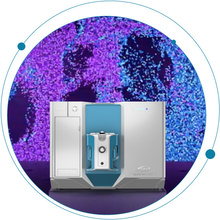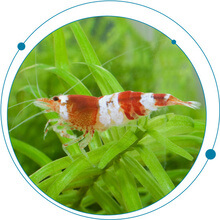Liquid chromatography-mass spectrometry is commonly used for Met ID but confident soft spot identification is not always possible. Imagine the advantage of unambiguous metabolite identification using liquid chromatography-mass spectrometry (LC-MS) reducing the need for additional safety testing during drug discovery. Quickly and easily generate the information you need using routine assays that are robust and efficient, enabling confident decision-making while also saving time and money.
Tags
PFAS testing: 2024 in review and what to expect for 2025
For as long as PFAS persist in the environment, there is no doubt they will persist in our conversations as environmental scientists. Globally, PFAS contamination has been detected in water supplies, soil and even in the blood of people and wildlife. Different countries are at various stages of addressing PFAS contamination and many governments have set regulatory limits and are working on assessing the extent of contamination, cleaning up affected sites and researching safer alternatives.

Inside the box: Acoustic ejection mass spectrometry for drug discovery
On average, it takes 10-15 years and 1-2 billion dollars to approve a new pharmaceutical for clinical use. Since approximately 90% of new drug candidates fail in clinical development, the ability to make early, informed and accurate decisions on the safety and efficacy of new hits and leads is key to increasing the chances of success.

Unveiling the power of ZT Scan DIA: Insights from Ludwig Sinn’s presentation at World HUPO Congress 2024
In a recent presentation at the World HUPO Congress 2024, Ludwig Sinn from the Ralser lab shared exciting advancements in proteomics research, focusing on the innovative ZT Scan DIA acquisition modes developed in collaboration with SCIEX. Let us explore the key highlights and benefits of this innovative technology.

Exploring the power of ZT Scan DIA
In a recent presentation, Tim Heymann from Mann Lab at the Max Planck Institute of Biochemistry shared his first impressions of ZT Scan DIA, the novel data-independent acquisition strategy from SCIEX, highlighting its innovative approach and significant benefits for proteomics research. Let’s dive into the key points from his insightful talk.

Inside the box: Complementary fragmentation with LC-MS for Metabolite Identification
Liquid chromatography-mass spectrometry is commonly used for Met ID but confident soft spot identification is not always possible. Imagine the advantage of unambiguous metabolite identification using liquid chromatography-mass spectrometry (LC-MS) reducing the need for additional safety testing during drug discovery. Quickly and easily generate the information you need using routine assays that are robust and efficient, enabling confident decision-making while also saving time and money.

Tips and tricks from our application experts: AAV analysis with CE
Peter Holper, Staff Applications Scientist at SCIEX, US, shares his tips and tricks on AAV analysis using CE with the BioPhase 8800 system and the PA 800 Plus system.
Relative migration time
How do I set up my processing method to calculate the RRT of the main peak to 10kD in karat 32 software?
Standard front-end cleaning for TripleTOF systems
General points: Use of laboratory deionized (DI) water is specified at points in the procedure. However, if there are any concerns regarding quality, please utilize a reputable supplier of pure deionized water (>18.2M ohm). 5-10 liters will typically be required...

Breaking down the SCIEX Triple Quad™ 7500 LC-MS/MS System – QTRAP® Ready
Sensitivity and robustness carry different meanings in the world of mass spectrometry. Generally, sensitivity refers to an instrument’s ability to achieve lower limits of detection (LOD). Robustness, on the other hand, refers to an instrument’s ability to consistently...

A rising star in food allergen research: proteomics of shellfish allergen
It’s important to know what you’re eating, especially if you suffer from a food allergy.
About 220 million people worldwide live with a food allergy.1 These numbers, along with the complexity and severity of conditions, continue to rise. In America, there are about 32 million food allergy sufferers—5.6 million of those are children under the age of 18.2.2 That’s 1 out of every 13 children, or about 2 in every classroom. From a financial perspective, the cost of food allergy childcare for US families is up to $25 billion
No Results Found
The page you requested could not be found. Try refining your search, or use the navigation above to locate the post.
No Results Found
The page you requested could not be found. Try refining your search, or use the navigation above to locate the post.